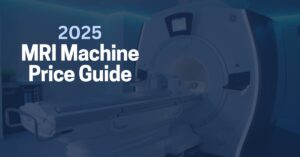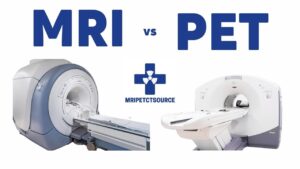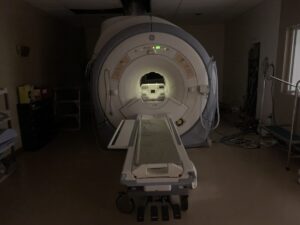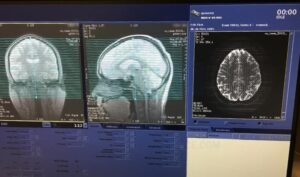ACR MRI accreditation guidelines are crucial for ensuring quality and safety in diagnostic imaging. The American College of Radiology has established an accreditation process and guidelines for imaging centers to promote standardized protocols, adherence to safety standards, and consistent quality in MRI imaging. MRI facilities seeking accreditation must meet the ACR’s standards for equipment, personnel qualifications, and image quality, among other criteria. In this article, we will discuss the ACR MRI accreditation process and its importance in ensuring safe and accurate imaging.
What Is The ACR MRI Accreditation Process?
The ACR MRI accreditation process is a comprehensive program that assesses the quality and safety of MRI equipment, facilities, and personnel. Imaging centers seeking ACR accreditation must meet stringent requirements, including specific equipment specifications, facility qualifications, and personnel qualifications. The accreditation process involves a thorough review of the facility’s imaging protocols, quality control measures, and image interpretation practices. Once accredited, imaging centers are required to maintain ongoing compliance with ACR guidelines and undergo periodic reassessment to ensure continued accreditation.
The accreditation process begins with an online application that includes detailed information about the MRI equipment, facility, and personnel qualifications. The ACR reviews the application and may request additional documentation or clarification. Once the application is accepted, the MRI facility must undergo a comprehensive MRI phantom testing to assess the performance of the MRI equipment. This testing involves imaging a set of standardized phantoms using the facility’s MRI equipment and submitting the images for evaluation. The ACR evaluates the images for image quality, spatial resolution, and other performance parameters to ensure that the MRI equipment meets the ACR’s standards.
In addition to the phantom testing, the ACR also conducts an on-site evaluation of the facility to assess its compliance with ACR guidelines for facility qualifications, including safety measures, emergency procedures, and patient care standards. The on-site evaluation also includes a review of the facility’s quality control measures, including image quality monitoring, equipment maintenance, and personnel qualifications. The ACR evaluators may also review the facility’s MRI protocols and image interpretation practices to ensure that they comply with ACR guidelines.
Benefits of ACR MRI Accreditation
Obtaining ACR MRI accreditation offers numerous benefits to MRI facilities, patients, healthcare providers, and payers. Firstly, ACR accreditation demonstrates a commitment to quality and safety in MRI imaging, which can enhance the reputation and credibility of the facility. It assures patients that they are receiving high-quality imaging services and that their safety is a top priority. Referring physicians also value ACR accreditation as it ensures that the imaging facility is adhering to standardized protocols and guidelines, leading to more accurate and reliable diagnostic information.
Healthcare providers can also benefit from ACR MRI accreditation as it can improve reimbursement opportunities. Some payers may require ACR accreditation as a prerequisite for reimbursement of MRI services, and obtaining accreditation can help facilities meet these requirements and avoid potential reimbursement challenges. Additionally, ACR accreditation can demonstrate to payers that the facility is committed to providing high-quality imaging services, which can strengthen the negotiating position for reimbursement rates.
ACR MRI accreditation also provides a framework for ongoing quality improvement in MRI imaging. The accreditation process includes regular reassessment to ensure continued compliance with ACR guidelines, which encourages MRI facilities to maintain high-quality imaging practices and stay up-to-date with the latest advancements in MRI technology and imaging protocols. This commitment to continuous improvement can result in improved patient care, increased patient satisfaction, and better outcomes for patients.
ACR MRI Guidelines
The ACR has established comprehensive guidelines for MRI quality control (QC) program, technical specifications for MRI equipment, image quality and safety guidelines for MRI examinations, and guidelines for personnel qualifications. Adhering to these guidelines is essential for MRI facilities seeking ACR accreditation and for maintaining high standards of MRI imaging.
Quality Control
The ACR guidelines for MRI quality control (QC) program include recommendations for routine testing and monitoring of MRI equipment to ensure optimal performance. This includes regular assessment of image quality, spatial resolution, signal-to-noise ratio, and other performance parameters using phantoms or other standardized testing methods. The guidelines also emphasize the importance of ongoing equipment maintenance, including regular calibration and performance verification, to ensure that the MRI equipment is functioning properly and producing high-quality images.
Imaging Equipment
Technical specifications for MRI equipment are also outlined in the ACR guidelines. These specifications cover key aspects of MRI equipment, including magnet field strength, gradient coil performance, coil design, and image acquisition parameters. Adhering to these technical specifications ensures that the MRI equipment is capable of producing high-quality images with accurate and reliable diagnostic information.
Image Quality
The ACR guidelines for image quality and safety in MRI examinations focus on optimizing image quality while minimizing patient risk. This includes recommendations for patient preparation, imaging protocols, and safety measures. For example, the guidelines emphasize the importance of patient screening for contraindications to MRI, such as metallic implants or devices, and the need for appropriate safety measures, such as patient monitoring and emergency procedures, during MRI examinations. The guidelines also provide recommendations for optimizing image quality, such as using appropriate coil selection, pulse sequences, and imaging parameters to obtain the best possible images for diagnosis.
Personnel Qualifications
Personnel qualifications are also a key component of the ACR MRI accreditation process. The guidelines outline the minimum qualifications and ongoing education requirements for MRI technologists who operate MRI equipment. This includes requirements for certification by a recognized certifying body, such as the American Registry of Radiologic Technologists (ARRT), and ongoing education to ensure that technologists stay current with the latest advancements in MRI technology and imaging protocols. The guidelines also recommend that MRI facilities have designated MRI medical directors who are responsible for overseeing the MRI program and ensuring compliance with ACR guidelines.
Conclusion
Ensuring quality and safety in MRI imaging is crucial for accurate diagnosis and patient care. The ACR MRI accreditation process and guidelines provide a comprehensive framework for MRI facilities to achieve and maintain high standards of MRI imaging. Adhering to these guidelines can lead to improved patient care, enhanced facility reputation, increased reimbursement opportunities, and ongoing quality improvement. MRI facilities should strive for accreditation to demonstrate their commitment to quality and safety in MRI imaging and provide the best possible care for their patients.
Related Resources
The information provided by MRIPETCTSOURCE (“we,” “us,” or “our”) on https://www.medicalimagingsource.com (the “Site”) is for general informational purposes only. All information on the Site is provided in good faith, however we make no representation or warranty of any kind, express or implied, regarding the accuracy, adequacy, validity, reliability, availability, or completeness of any information on the Site. UNDER NO CIRCUMSTANCE SHALL WE HAVE ANY LABILITY TO YOU FOR ANY LOSS OR DAMAGE OF ANY KIND INCURRED AS A RESULT OF THE USE OF THE SITE OR RELIANCE ON ANY INFORMATION PROVIDED ON THE SITE. YOUR USE OF THE SITE AND YOUR RELIANCE ON ANY INFORMATION ON THE SITE IS SOLELY AT YOUR OWN RISK.






